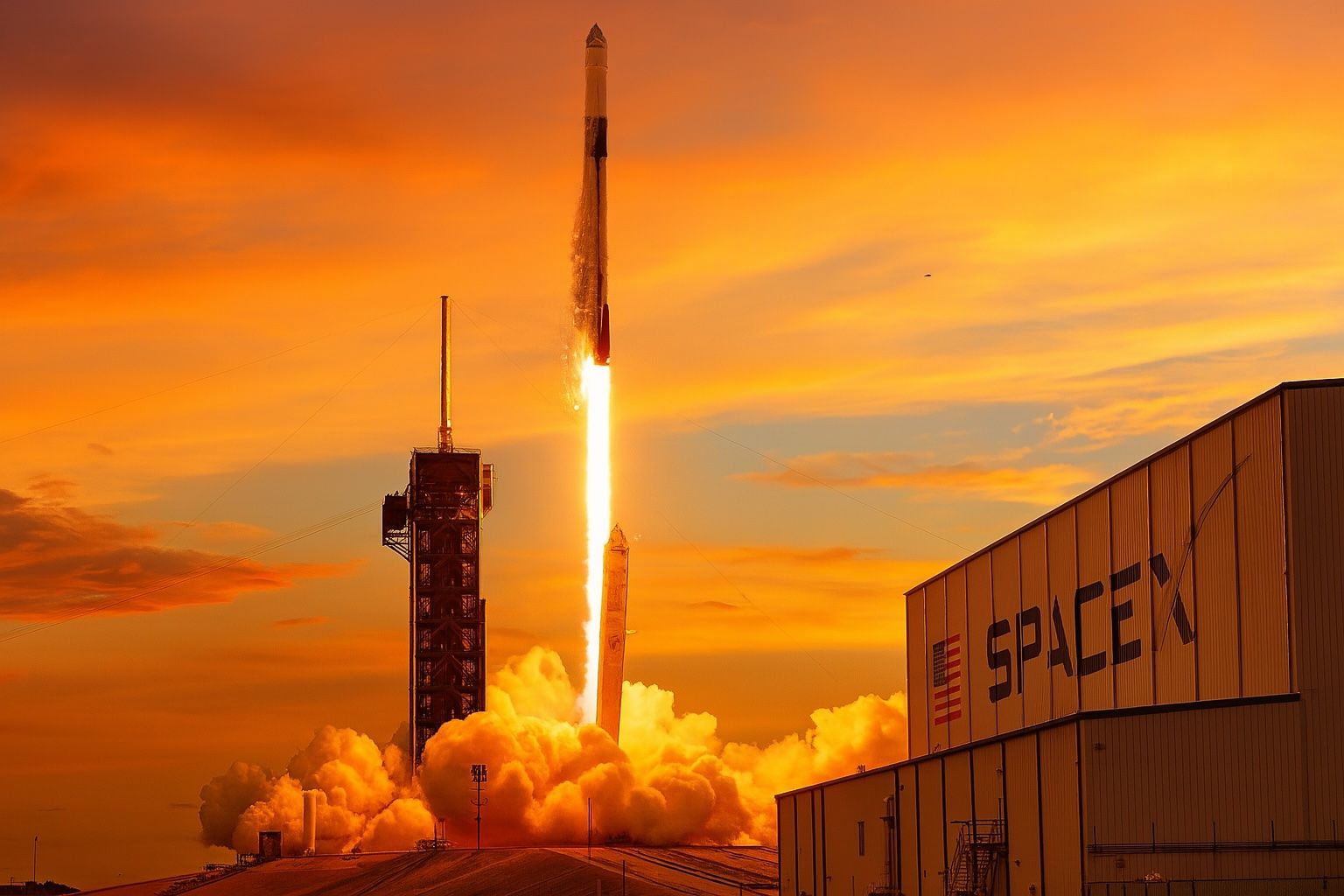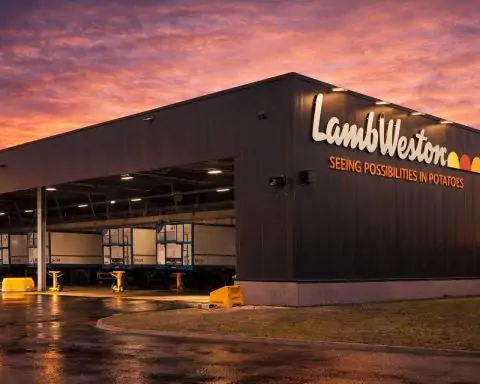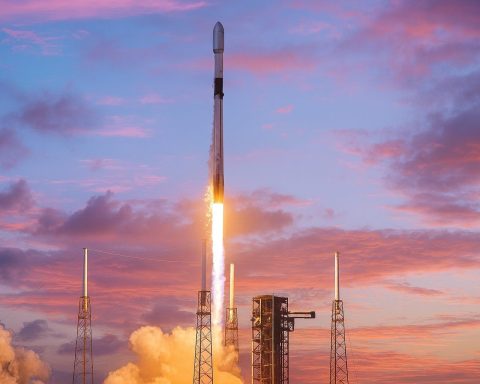SpaceX is targeting a pre‑dawn Starlink launch from NASA’s Kennedy Space Center early Saturday, days after a West Coast Falcon 9 carried 28 satellites to orbit—and as a new FAA order confines U.S. commercial launches to overnight hours starting Nov. 10.
What’s scheduled at Kennedy Space Center
SpaceX is preparing the Starlink Group 10‑51 mission from Launch Complex 39A at KSC. The company is aiming for 7:10 a.m. EST (12:10 UTC) on Saturday, Nov. 8, flying a Falcon 9 on a northeasterly trajectory. The first stage is planned to land on the droneship A Shortfall of Gravitas (ASOG) positioned in the Atlantic, off the South Carolina coast, about 8½ minutes after liftoff. If successful, this would mark ASOG’s 131st booster landing and SpaceX’s 531st landing overall. The payload consists of 29 Starlink V2 Mini “Optimized” satellites, to be deployed a little over an hour after liftoff. The booster assigned is B1069, set for its 28th flight. [1]
Live coverage: Spaceflight Now plans live commentary beginning roughly an hour before liftoff. [2]
New FAA order will confine launches to overnight hours
The FAA issued an emergency order effective Nov. 7 that phases in domestic airline schedule cuts at 40 major airports and, beginning 6:00 a.m. EST on Nov. 10, limits commercial space launches and reentries to 10:00 p.m.–6:00 a.m. local time “until this Order is cancelled.” The measures respond to controller staffing stress during the ongoing federal funding lapse. Airlines must reduce schedules 4% initially, rising to 10% by Nov. 14, with potential civil penalties for noncompliance. [3]
Major outlets are reporting how the order will temporarily reshape both airline and space operations nationwide; local media in Florida noted the change will affect Cape Canaveral and Vandenberg launch timelines. [4]
West Coast this week: 28 Starlinks from Vandenberg, clean droneship landing
On Thursday, Nov. 6, SpaceX launched Starlink Group 11‑14 from Vandenberg Space Force Base at 4:13 p.m. EST (21:13 UTC), delivering 28 satellites toward low Earth orbit. Booster B1093 completed its 8th flight and touched down on the Of Course I Still Love You (OCISLY) droneship in the Pacific about 8½ minutes after liftoff. Space.com tallied this as the 142nd Falcon 9 launch of the year at that point. [5]
Spaceflight Now’s mission log underscores the same key details and adds that the California launch brought the 2025 Starlink total launched to 2,600. [6]
Earlier this week in Florida: 29 Starlinks on Nov. 5 from SLC‑40
Two days earlier, on Wednesday, Nov. 5, a Falcon 9 lifted from Space Launch Complex‑40 at 8:31 p.m. EST (01:31 UTC Nov. 6) with 29 Starlink V2 Mini satellites. Booster B1094—on its 5th flight—landed on Just Read the Instructions (JRTI) in the Atlantic. Space.com and Spaceflight Now both confirmed deployment about an hour after liftoff; Space.com counted that flight as SpaceX’s 141st Falcon 9 of 2025. [7]
Why the launch pace matters: reuse is the engine
SpaceX’s cadence continues to be driven by first‑stage reuse and rapid refurbishment. As one marker, SpaceX pushed a Falcon 9 core to a record‑setting 31st flight in October, illustrating the fleet maturity that enables multiple Starlink launches per week when range and weather allow. [8]
Local and industry outlets had already projected that the Florida Space Coast was on the cusp of surpassing its annual launch record set in 2024; this week’s schedule indicated the region could tie or exceed 93 launches pending range availability and weather. [9]
What to watch next
- KSC Starlink 10‑51 (Nov. 8): Pre‑dawn liftoff remains the near‑term focus; SpaceX’s public launch calendar lists multiple Starlink missions stacking up mid‑November from both LC‑39A and SLC‑40 in Florida, subject to the FAA’s overnight‑only rule beginning Nov. 10. [10]
- Range/airspace constraints: Expect overnight windows for commercial launches and reentries in the U.S. while the FAA order remains in effect, with daytime operations curtailed. [11]
Key facts at a glance
- Next Florida launch: Starlink 10‑51 from KSC LC‑39A, Sat., Nov. 8, 7:10 a.m. EST (12:10 UTC); booster B1069‑28 targeting droneship ASOG; 29 V2 Mini Optimized satellites. [12]
- This week’s launches:
– Nov. 6: Vandenberg Starlink 11‑14, 28 satellites, booster B1093‑8 to OCISLY (Falcon 9 launch #142 of 2025). [13]
– Nov. 5: Cape Canaveral Starlink 6‑81, 29 satellites, booster B1094‑5 to JRTI (Falcon 9 launch #141 of 2025). [14] - New policy:FAA emergency order restricts commercial space launches/reentries to 10 p.m.–6 a.m. local starting Nov. 10, while airline schedule cuts phase in 4% to 10% at major airports. [15]
Bottom line
Nov. 7 closes with SpaceX poised for another pre‑dawn Starlink mission from Florida, fresh off a successful West Coast launch. The FAA’s overnight‑only window for commercial launches beginning Nov. 10 will temporarily shape cadence and timing, but with a deep reusable booster fleet and multiple pads, SpaceX is positioned to keep its high‑tempo schedule intact—just shifted after dark. [16]
Sources: Spaceflight Now live coverage and launch logs; Space.com launch reports; FAA emergency order; SpaceX launch calendar; industry coverage of Florida’s annual launch pace. [17]
References
1. spaceflightnow.com, 2. spaceflightnow.com, 3. www.faa.gov, 4. www.politico.com, 5. www.space.com, 6. spaceflightnow.com, 7. www.space.com, 8. spaceflightnow.com, 9. phys.org, 10. www.spacex.com, 11. www.faa.gov, 12. spaceflightnow.com, 13. www.space.com, 14. www.space.com, 15. www.faa.gov, 16. spaceflightnow.com, 17. spaceflightnow.com










